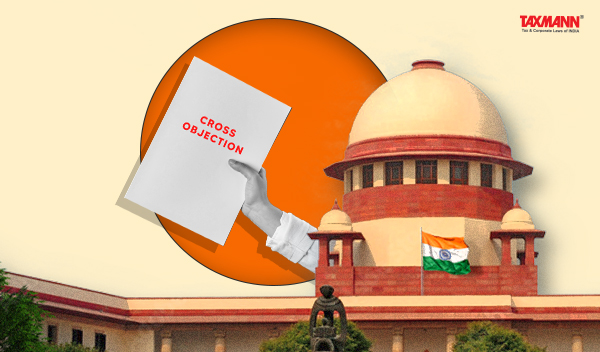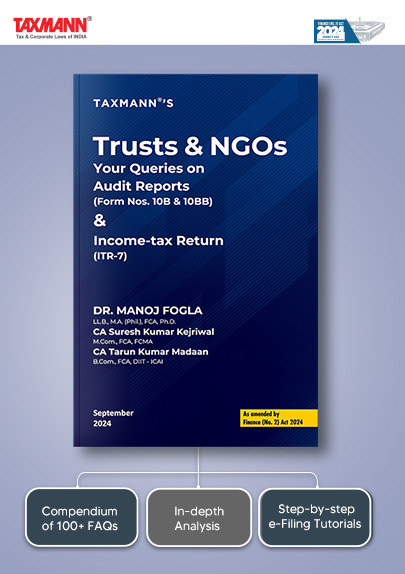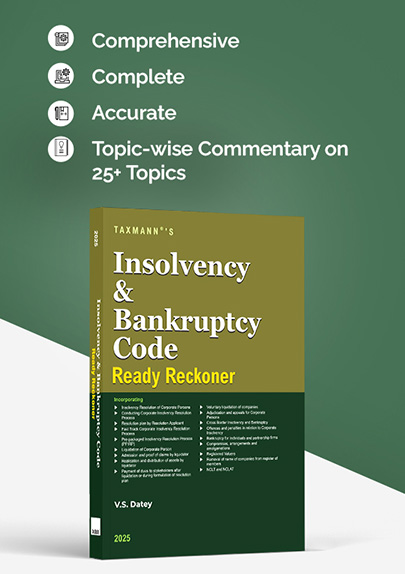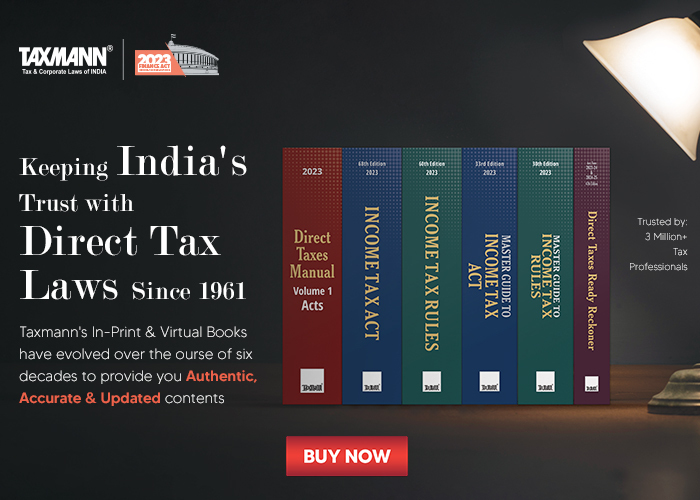Cross-Objection Not Maintainable in Appeal Filed Under Section 260A | HC
- Blog|News|Income Tax|
- 3 Min Read
- By Taxmann
- |
- Last Updated on 6 March, 2025
Case Details: Principal Commissioner of Income-tax vs. Nagar Dairy (P.) Ltd. - [2025] 172 taxmann.com 111 (Delhi)
Judiciary and Counsel Details
- Yashwant Varma & Harish Vaidyanathan Shankar, JJ.
-
Sanjay Kumar, Ms Monica Benjamin & Ms Easha, Advs. for the Petitioner.
-
Ved Jain, Nischay Kantoor & Ms Soniya Dodeja, Advs. for the Respondent.
Facts of the Case
The assessee was a company and was part of the ND Group. A search and seizure operation was undertaken in terms of section 132(1) in the case of the ND Group. During that search, several documents and material relating to the assessee were seized from the premises of APPL. The proceedings under section 153C were initiated against the assessee.
The Assessing Officer (AO) passed the assessment order by making certain additions. On appeal, CIT(A) granted partial relief to the assessee. Both the assessee and the revenue preferred an appeal to the Tribunal. The Tribunal partly allowed the appeal filed by the assessee and granted partial relief. Aggrieved-assessee filed a cross-objection to the High Court against the order of the Tribunal. The revenue objected that the cross-objection would not be maintainable in light of section 260A neither envisaging nor creating such a remedy.
High Court Held
The High Court held that section 260A refrains from incorporating a specific provision permitting the filing of a cross-objection. This starkly contrasts what is provisioned for at the second appeal stage before the Tribunal. Thus, while at the stage of an appeal reaching the board of the Tribunal, both the revenue as well as the assessee are statutorily enabled to prefer a cross-objection on receipt of notice of an appeal, the Legislature has not made any corresponding or parallel provision in section 260A.
It is also pertinent to note that while that cross-objection could be to ”any part of such order” and which forms the subject matter of the appeal filed before the Tribunal, the right of the respondent stands confined to urging for consideration that the appeal does not give rise to any substantial question of law.
The above aspect is of critical significance and representative of the legislative intent of narrowing down the scope of the appeal that may come to be instituted under section 260A. If one were to countenance a right of preferring a cross-objection despite the aforenoted statutory prescription, it would result in not only widening the scope of the intended appeal proceedings but also amount to the Court by way of legal interpretation reading into section 260A the existence of a substantive right which the statute otherwise forbears.
List of Cases Reviewed
- Commissioner of Income Tax v. Meghalaya Steel [2015] 17 SCC 647
- Calcutta High Court in Subodh Gopal Bose v. Brojendra Kishore Roy [1952 SCC OnLine Cal 73]
- Chandrawati v. Ganesh Prasad Lakshmi Prasad [1998 SCC OnLine MP 187] (Para 55)
- S.B.I. Home Finance Ltd. v. Commissioner of Income Tax [2000 SCC OnLine Cal 692] (Para 57)
- CIT v. Punjab State Cooperative Agricultural Development Bank 2016:PHHC:113325-DB (Para 65)
- CCE v. Chhattisgarh State Industrial Development Corp. Ltd. 2018 SCC OnLine Chh 722 (Para 66) distinguished.
List of Cases Referred to
- Smt. Jyoti Kumari v. Asst. CIT 2010 SCC OnLine Kar 5147 (para 12)
- Superintending Engineer v. B. Subba Reddy (1999) 4 SCC 423 (para 13)
- Municipal Corpn. of Delhi v. International Security & Intelligence Agency Ltd. (2004) 3 SCC 250 (para 13)
- B. Subba Reddy, Banarsi v. Ram Phal (2003) 9 SCC 606 (para 16)
- Palasseri Velayudhan v. Palasseri Ithayi 1994 SCC OnLine Ker 38 (para 25)
- CIT v. Meghalaya Steel (2015) 17 SCC 647 (para 55)
- Subodh Gopal Bose v. Brojendra Kishore Roy 1952 SCC OnLine Cal 73 (para 55)
- Chandrawati v. Ganesh Prasad Lakshmi Prasad 1998 SCC OnLine MP 187 (para 55)
- Vijay Prakash v. Jankibai 1989 SCC OnLine MP 208 (para 55)
- Beniprasad Bijaykumar v. Lever Brothers (India) Ltd. 1957 SCC OnLine MP 148 (para 58)
- V. Ramasamy v. M. Ranganathan 2016 SCC OnLine Mad 11343 (para 63)
- CCE v. Chhattisgarh State Industrial Development Corp. Ltd. 2018 SCC OnLine Chh 722 (para 64).
Disclaimer: The content/information published on the website is only for general information of the user and shall not be construed as legal advice. While the Taxmann has exercised reasonable efforts to ensure the veracity of information/content published, Taxmann shall be under no liability in any manner whatsoever for incorrect information, if any.

Taxmann Publications has a dedicated in-house Research & Editorial Team. This team consists of a team of Chartered Accountants, Company Secretaries, and Lawyers. This team works under the guidance and supervision of editor-in-chief Mr Rakesh Bhargava.
The Research and Editorial Team is responsible for developing reliable and accurate content for the readers. The team follows the six-sigma approach to achieve the benchmark of zero error in its publications and research platforms. The team ensures that the following publication guidelines are thoroughly followed while developing the content:
- The statutory material is obtained only from the authorized and reliable sources
- All the latest developments in the judicial and legislative fields are covered
- Prepare the analytical write-ups on current, controversial, and important issues to help the readers to understand the concept and its implications
- Every content published by Taxmann is complete, accurate and lucid
- All evidence-based statements are supported with proper reference to Section, Circular No., Notification No. or citations
- The golden rules of grammar, style and consistency are thoroughly followed
- Font and size that’s easy to read and remain consistent across all imprint and digital publications are applied






 CA | CS | CMA
CA | CS | CMA


